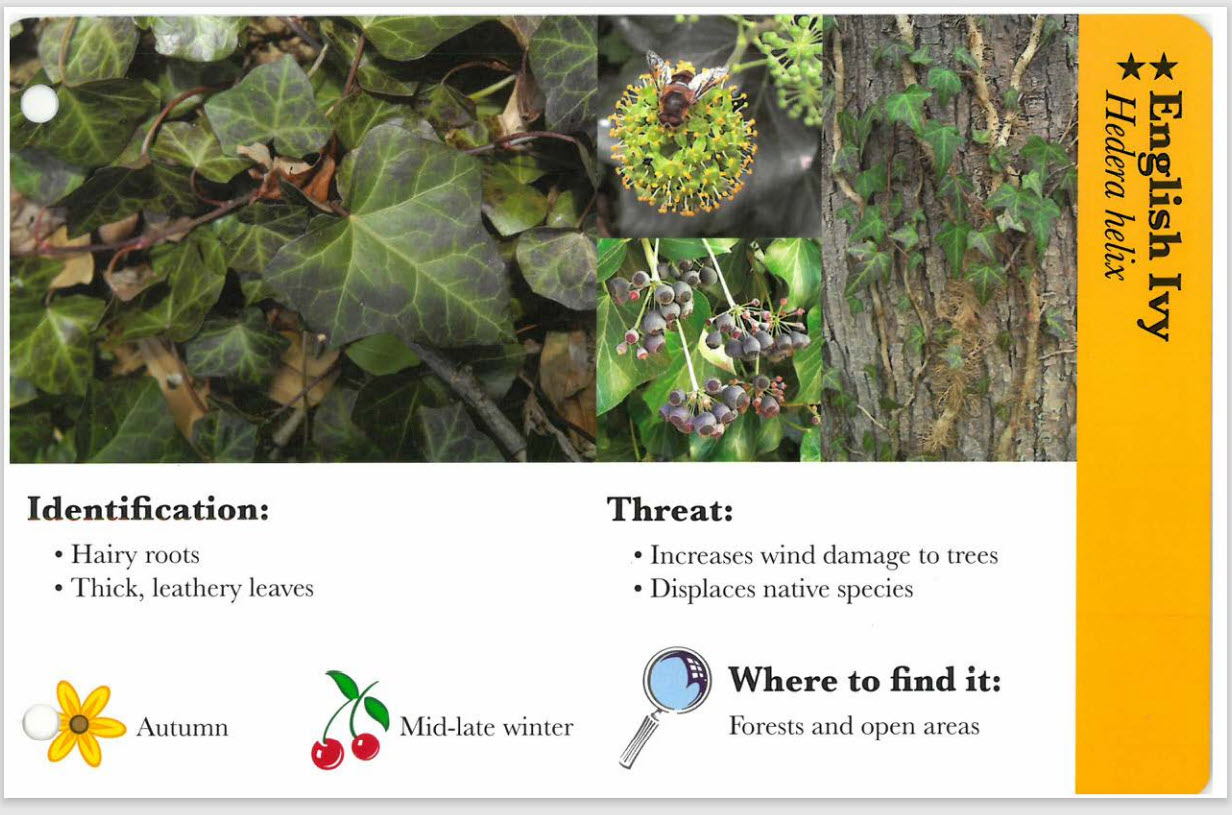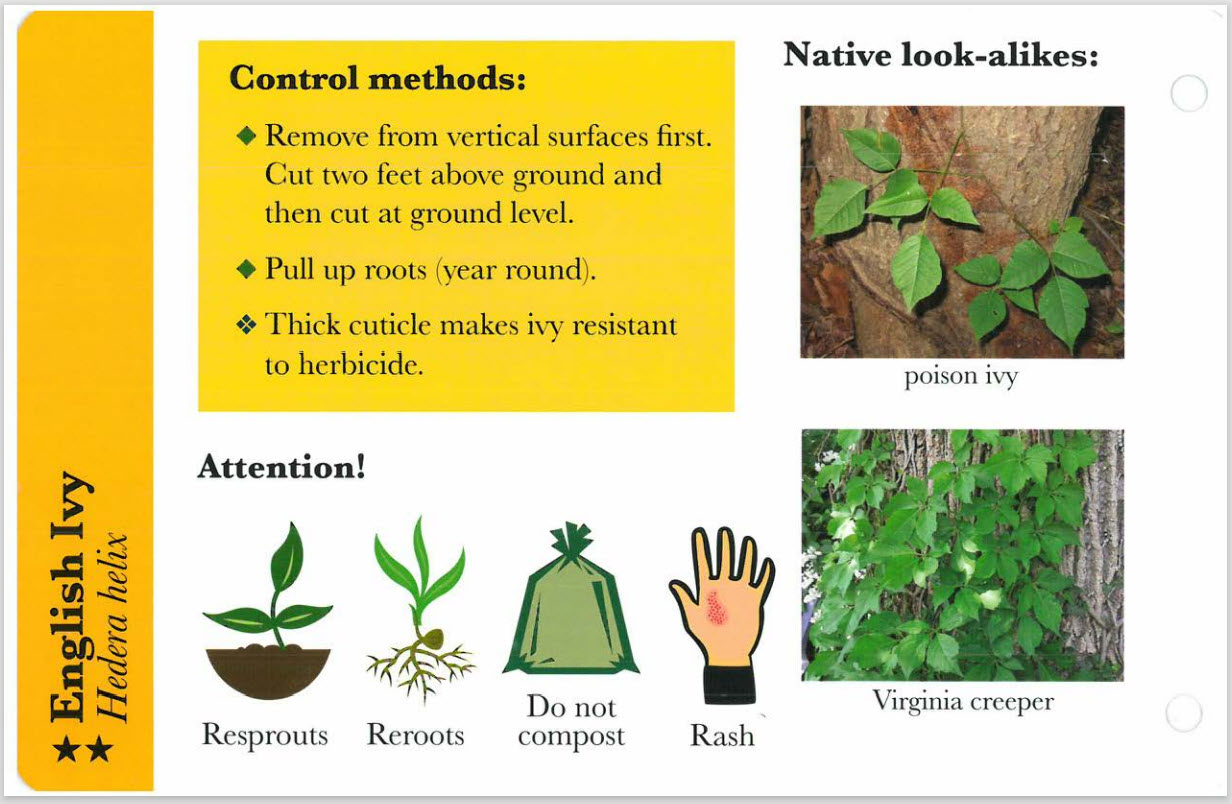Public Works and Environmental Services Alert:
Find tips to identify and control high-ranking species.
Early Detection and Rapid Response lists emerging invasive species in Fairfax County and where they have been found.
High-ranking species commonly found in Fairfax County
Cards give ways to identify these common plants, the threat they cause, methods to control them and some native look-alikes.

